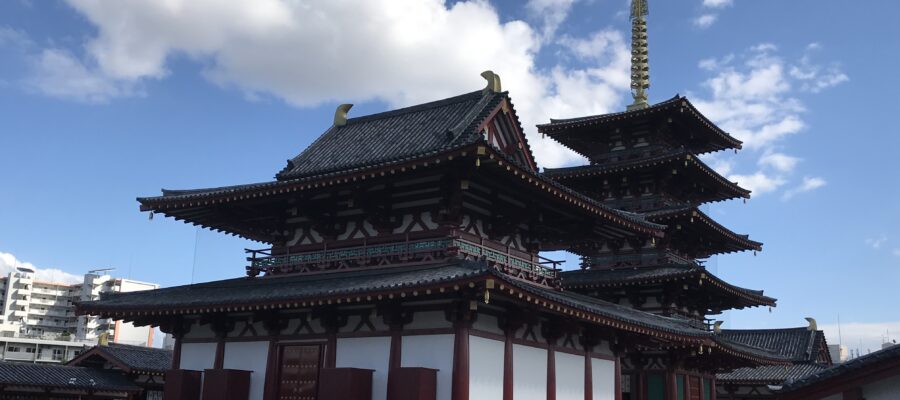”新”西国三十三所
西国三十三所を巡りだしてから、ネットで調べるうちに「新西国三十三所」という観音巡礼があることを知りました。こちらは昭和に入ってから新聞社の企画により、読者の人気投票で選ばれたお寺です。オリジナルの西国霊場のお寺に近いところも多いので、西国霊場めぐりと併行して、無理のない範囲で回ってみることにしました。
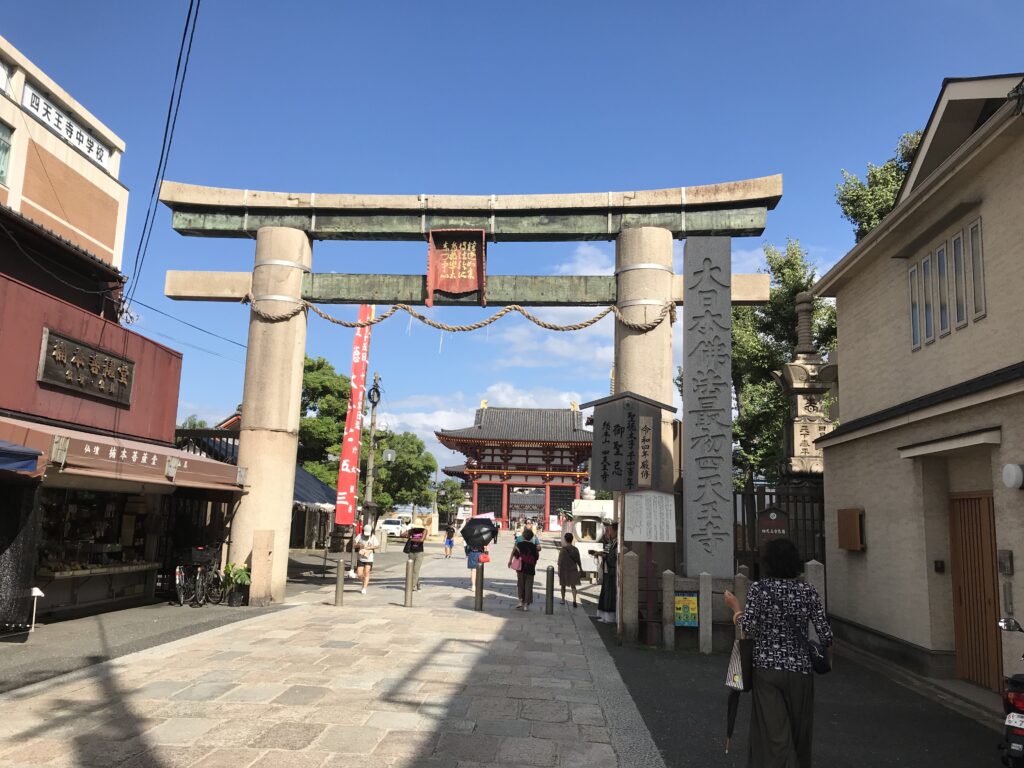
第1番札所 四天王寺
第1番札所は大阪の四天王寺。ここは子供の頃、親父に連れてきてもらったことがありました。覚えているのは、池にいた亀とお土産に買った釣鐘饅頭ぐらいです。今回は、改めていろいろ見て回りました。
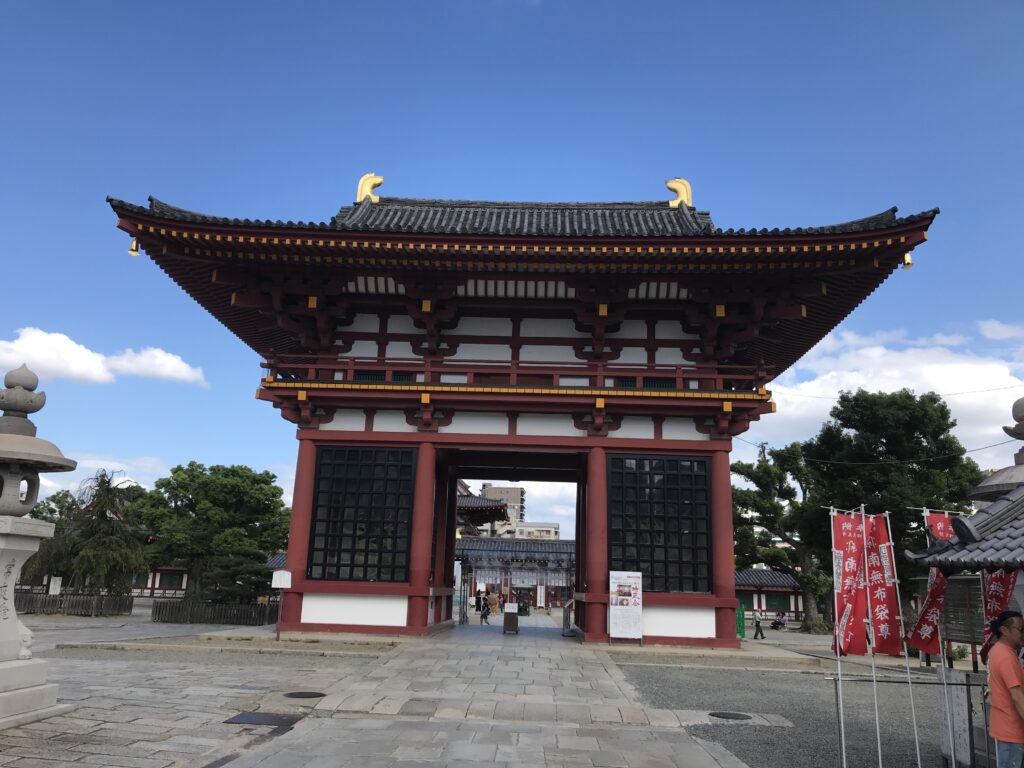
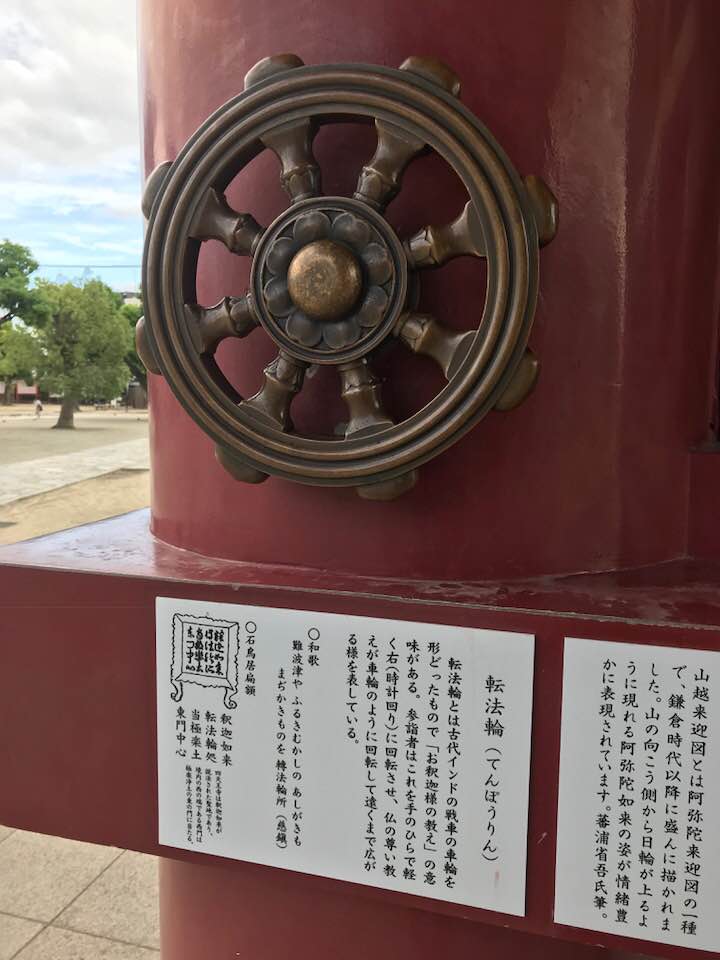
極楽門を通ると転法輪が柱に取り付けてあります。とりあえず数回転させました。チベット仏教のマニ車のように、お経を何回か読んだことになるのでしょうか。次に、五重塔へ向かいました。五重塔はコンクリート製です。かつて、台風で倒壊したり、その後再建したものが空襲で焼け落ちたり、災難に多々遭遇している五重塔です。
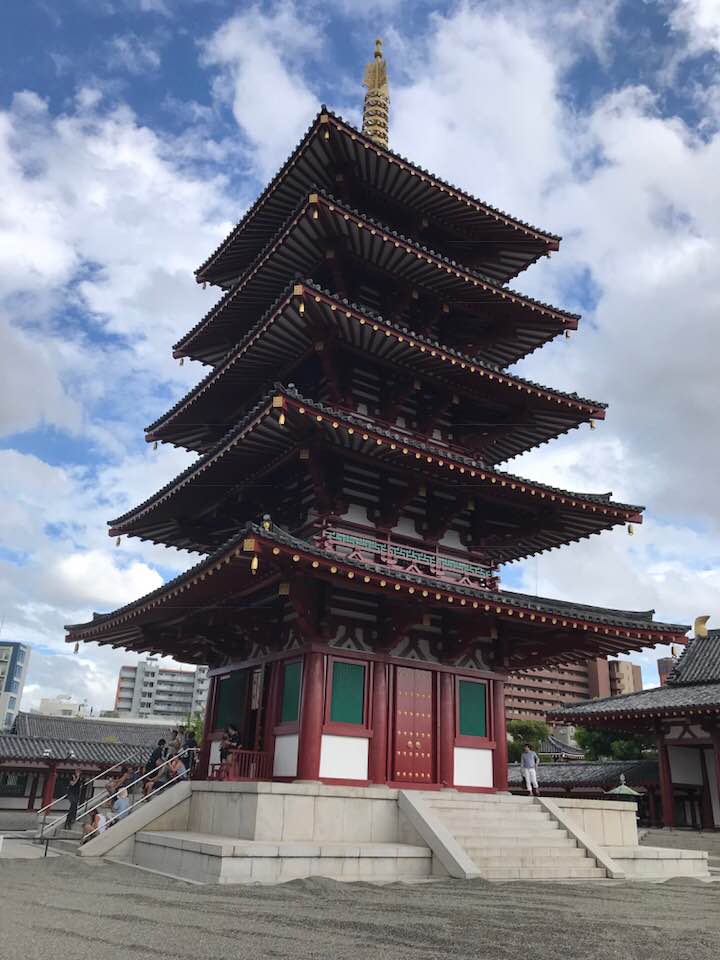
上ることができるので、上ってみました。たった5重なのですが、降りる際は膝が笑って足がガクガクになりました。その後、金堂、講堂をお参りしました。この伽藍配置は、教科書で習う四天王寺式です。主な堂塔が南北一直線に並んでいます。本当にそうなのだなと、現場を歩いて実感しました。
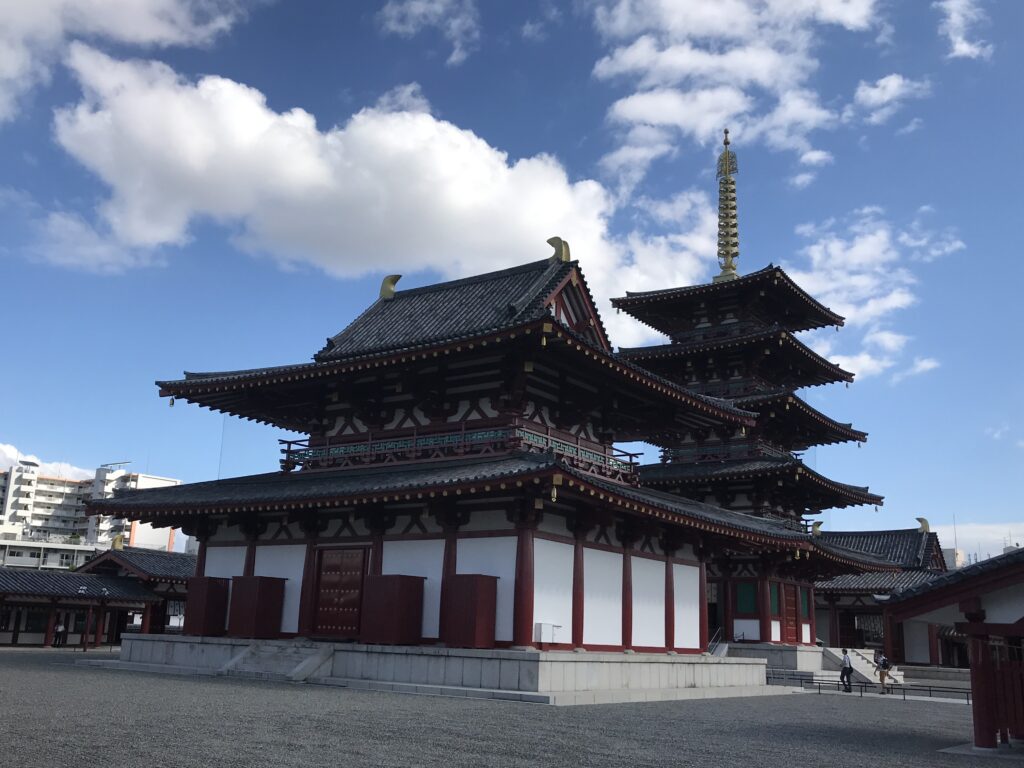
あべのハルカス
天王寺エリアには現在のところ、日本一高いあべのハルカスのビルが建っています。コンクリート製の再建とは言え、1400年余り前に創建された寺院と並んで見られます。時空を超えたマッチングを体験できるのも四天王寺の良さだと思います。(完)
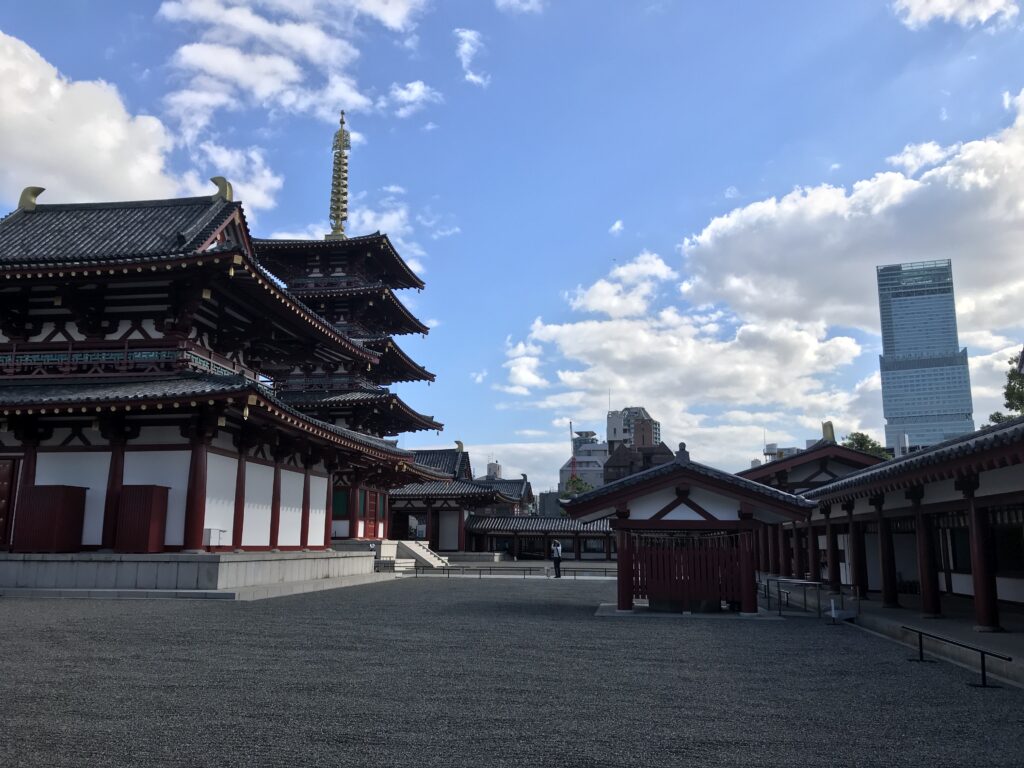
四天王寺の御朱印
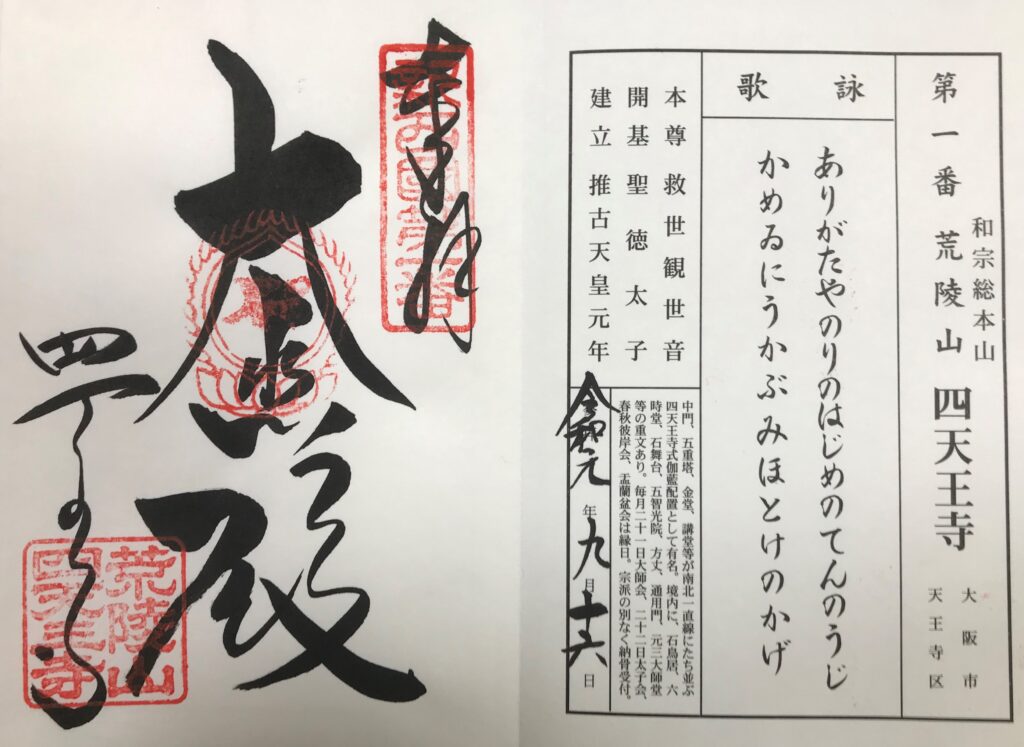
大阪のお土産
大阪の天王寺と言えば、串カツでしょう。全国に配送可能です。大阪の味をどうぞ!
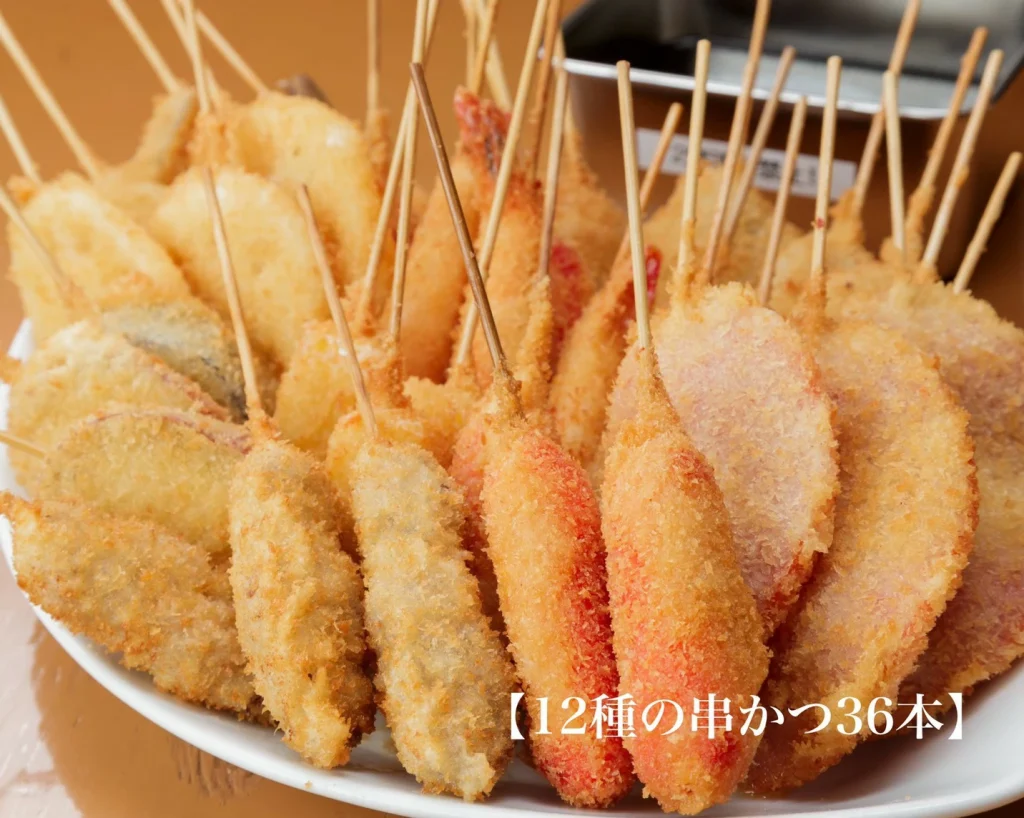
価格:5,980円
(2022/1/2 18:24時点)
感想(2件)
Shitennoji Temple
“New” 33 sacred places in the western part of Japan
After I started visiting the 33 sacred places in the western part of Japan , I learned about a pilgrimage called the “New 33 sacred places in the western part of Japan ” on the Internet. These temples were selected by popular vote by readers of a newspaper in the Showa era. Since many of the temples are close to those of the original Saigoku Sanjusansho, I decided to make the pilgrimage in conjunction with the Saigoku Sanjusansho tour.
The first temple, Shitennoji Temple
The first temple is Shitennoji Temple in Osaka. My father used to take me to this temple when I was a child. The only things I remember are the turtles in the pond and the fish bell buns I bought as souvenirs. This time, I took a look around again.
As I passed through the Gokurakumon gate, I saw the Temborin (Wheel of Fortune) attached to a pillar. At first, I made a few turns. I wondered if it meant that I had read the sutras several times, like a Tibetan Buddhist mani-wheel. Next, I went to the five-story pagoda. The five-story pagoda is made of concrete. In the past, the five-story pagoda has encountered many disasters, such as collapsing during typhoons, or burning down during air raids after it was rebuilt.
It was possible to climb up, so I did. It was only five layers, but my knees were laughing and my legs were wobbling when I went down. After that, I visited the Kondo (Main Hall) and the lecture hall. The layout of the temple is in the Shitennoji style that Japanese students learn in textbooks. Those halls and towers are lined up in a straight line from north to south. Walking around the site, I realized that this was indeed the case.
Abeno Harukas
The Tennoji area is currently home to the tallest building in Japan, Abeno Harukas. Even though it is a concrete reconstruction, it can be seen side by side with a temple that was founded more than 1400 years ago. I think the beauty of Shitennoji Temple is that you can experience a match that transcends time and space. (End)
Temple Shitennoji
“Nouveau” 33 lieux sacrés dans la partie occidentale du Japon
Après avoir commencé à visiter les 33 lieux sacrés de l’ouest du Japon, j’ai appris l’existence d’un pèlerinage appelé “Les 33 nouveaux lieux sacrés de l’ouest du Japon” sur Internet. Ces temples ont été sélectionnés par un vote populaire des lecteurs d’un journal de l’ère Showa. Comme beaucoup de ces temples sont proches de ceux du Saigoku Sanjusansho original, j’ai décidé de faire ce pèlerinage en même temps que le circuit du Saigoku Sanjusansho.
Le premier temple, le temple Shitennoji
Le premier temple est le temple Shitennoji à Osaka. Mon père avait l’habitude de m’emmener dans ce temple quand j’étais enfant. Les seules choses dont je me souviens sont les tortues dans l’étang et les brioches en forme de cloche de poisson que j’ai achetées comme souvenirs. Cette fois-ci, j’ai jeté un nouveau coup d’œil.
En franchissant la porte Gokurakumon, j’ai vu la Temborin (roue de la fortune) fixée à un pilier. Au début, j’ai fait quelques tours. Je me suis demandé si cela signifiait que j’avais lu les sutras plusieurs fois, comme une mani-roue bouddhiste tibétaine. Ensuite, je suis allé à la pagode à cinq étages. La pagode à cinq étages est faite de béton. Dans le passé, la pagode à cinq étages a connu de nombreux désastres, comme l’effondrement pendant les typhons ou l’incendie pendant les raids aériens après sa reconstruction.
Il était possible de monter, alors je l’ai fait. Ce n’était que cinq épaisseurs, mais mes genoux riaient et mes jambes flageolaient quand je suis descendu. Après cela, j’ai visité le Kondo (salle principale) et la salle de conférence. La disposition du temple est dans le style Shitennoji que les étudiants japonais apprennent dans les manuels. Ces salles et ces tours sont alignées en ligne droite du nord au sud. En me promenant sur le site, je me suis rendu compte que c’était effectivement le cas.
Abeno Harukas
Le quartier de Tennoji abrite actuellement le plus haut bâtiment du Japon, Abeno Harukas. Même s’il s’agit d’une reconstruction en béton, on peut le voir côte à côte avec un temple fondé il y a plus de 1400 ans. Je pense que la beauté du temple Shitennoji est que l’on peut y vivre une rencontre qui transcende le temps et l’espace. (Fin)
